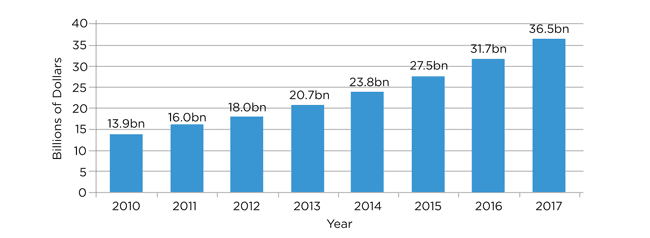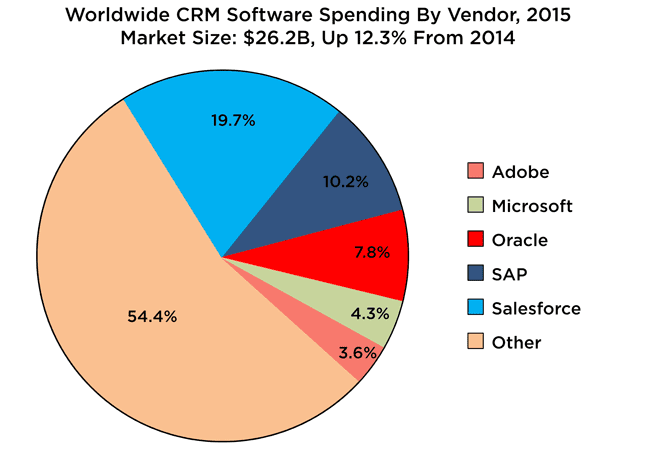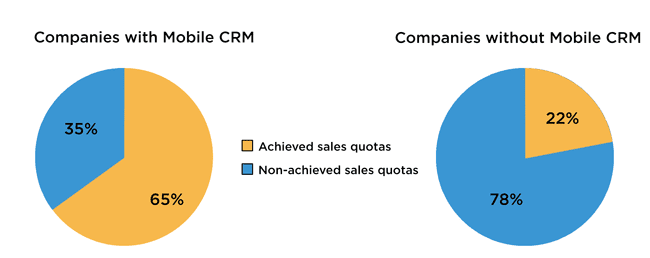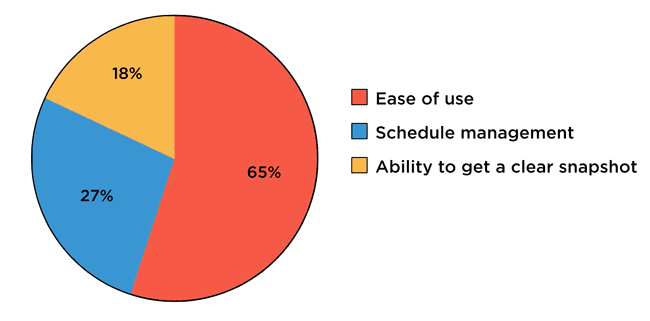These CRM Statistics Prove Why It Should Be in Your Marketing Arsenal
Customer Relationship Management (CRM) systems have been around for quite some time. They actually began as a green screen (remember those days) version of a more elaborate rolodex. As time has passed, and as technology has become more refined, micronized and cloud-powered, CRMs have evolved. Today’s CRMs are more powerful than you may think, and serve as one of the many marketing weapons that businesses use to improve customer loyalty and boost Return on Investment (ROI).
With more than 20 years in the software timeline, there are ample facts about CRM software that you should be aware of if you are considering adding this software to your marketing arsenal. We’ll explore the most recent CRM statistics to deliver some factoids that you can use to help improve your customer relationships to the benefit of your bottom line.
$36 Billion Industry
At first glance, you’d probably not think that CRM would be worth an estimated $36 billion. SaaS growth in the CRM market is healthy and is growing at 27% year-over-year. As of the end of 2016, CRM earmarked $36 billion in estimated value, with figures for this year somewhere in the realm of $45 billion worldwide. With CRM growth does come the major players, of which, the top five reportedly dominate 45% of the industry.
 So who are the industry leaders? Adobe heads the pack with 26.9% of the market share. In at second place is Salesforce (21.1%). For third place it’s Microsoft (20%). Various others systems combine to mark the fourth spot (13%). In last is Oracle, which is on the decline at -3.4%. Unsurprisingly, Oracle recently upped the ante by making one of the largest software acquisitions in years with their purchase of Netsuite for a reported $9.3 billion, according to WSJ. This massive buyout represents the company’s attempts to modernize in the wake of a declining user base as it looks to better compete with its growing and cloud-powered rivals.
So who are the industry leaders? Adobe heads the pack with 26.9% of the market share. In at second place is Salesforce (21.1%). For third place it’s Microsoft (20%). Various others systems combine to mark the fourth spot (13%). In last is Oracle, which is on the decline at -3.4%. Unsurprisingly, Oracle recently upped the ante by making one of the largest software acquisitions in years with their purchase of Netsuite for a reported $9.3 billion, according to WSJ. This massive buyout represents the company’s attempts to modernize in the wake of a declining user base as it looks to better compete with its growing and cloud-powered rivals.

CRM Adoption Rates
Perhaps the most difficult aspect of integrating new software into any business is the adoption factor. CRM adoption rates have historically been hit or miss. Since using the software requires that end users learn, and ultimately master, a unique and foreign interface, CRM adoption rates are bound by the user-friendliness and ease of navigation as well as features that are offered in the Graphical User Interface (GUI), notwithstanding the available set of integrations.
Fortunately, CRM adoption rates are a lot healthier than you may think. According to Destination CRM, healthy adoption rates go hand-in-hand with educating and training employees on the CRM system:
“Firms with high end user adoption rates get high marks for the education they deliver to sales teams on how to get the maximum benefit out of using their CRM application. In fact, of the 8.7 percent of companies that received ‘exceeds expectations’ ratings for the quality and quantity of the CRM application training they deliver, 71.2 percent reported that more than 90 of their reps actively used their CRM system.”
In related report, CRM magazine says that on the low end, adoption rates hover around 24%, with some businesses yielding rates as high as 90%. Across the board, adoption is around 47%. This, of course, changes when the system offers a modernized user interface. Critical to adoption is adequate support, found via telephone, live chat and email services that are offered by the CRM vendor.
The Rise of Cloud
Cloud based CRM usage is on the rise, too, and will ultimately replace traditional client-based software systems. According to a Software Advice study, in 2008, on premise CRM systems represented 88% of all solutions in use. Today, cloud CRM systems represent 87% of all solutions being used.
 Thanks to cloud-powered systems, combined with advancements in mobile technologies, mobile CRM usage has skyrocketed in recent years, too. A Nucleus Research report finds that for companies using a mobile CRM, 65% are achieving their sales quotas. For companies that are not using a mobile CRM solution, just 22% of sales quotas are being realized.
Thanks to cloud-powered systems, combined with advancements in mobile technologies, mobile CRM usage has skyrocketed in recent years, too. A Nucleus Research report finds that for companies using a mobile CRM, 65% are achieving their sales quotas. For companies that are not using a mobile CRM solution, just 22% of sales quotas are being realized.

Most Desired CRM Features
With several decades of application, the most desired CRM feature above any other is “Ease of Use” (65%), according to Inside CRM. “Schedule Management” takes second place at 27%, and “Data Snapshots”comes in third at 18%.

The ROI of CRM
When choosing a CRM system, most businesses are going to ask: What’s the ROI look like? It’s a credible question because software, especially at the medium or enterprise level, is a serious commitment that needs to benefit the bottom line to be feasible.
A quick look at a Forrester report on CRM ROI is telling. The report culled data from several companies that employed more than 2,000 employees and that were using Microsoft Dynamics CRM. The result was that companies can expect an ROI of as much as 245% when they properly integrate and train their employees to effectively use CRM as a team.
According to the Forrester study:
- 50% of teams improved productivity
- Sales productivity and uplift was 5%
- Consultation time was reduced by 10%
- Revenue increased by 2%
- Customer service labor cost was reduced by 40%
- Labor costs overall decreased by 20%
- Marketing budgets saved at least $75,000
As these numbers break down, an organization that implements CRM for 50 users with an average annual salary of $60,000, in which half an hour per day per employee is spent on gathering information, 15 minutes on entering and linking data across systems, and 10 employees have reporting tasks, will be missing out on $1,116 per day, $27,083 per month, and $325.000 per year. In three years, the organization will have lost out on a potential $975,000 for not having implemented a CRM solution. That’s right, almost one million dollars.
Current CRM Statistics
To wrap things up, here is a comprehensive list of CRM statistics:
- 79% of leads never convert (Pardot)
- 30% of marketers fail to close on leads due to disparate data sources (Cyber Sphere)
- CRM has a 15.1% CAGR (Forbes)
- CRM is a $36 billion industry (Forbes)
- CRM ROI equates to $5 for every $1 spent (Baseline)
- CRM adoption rates average at 26% (Salesforce)
- 65% sales quota increase when CRM is adopted (Innopple Technologies)
- CRM can increase revenue streams by as much as 41% (Trackvia)
- Customer retention increases by as much as 26% with social CRM (Nucleus Research)
- CRM can improve customer retention rates by as much as 27% (Trackvia)
- 60% of small businesses use CRM for email marketing (MarketingCharts.com)
- 67% of customers will spend more money if the experience is positive (Global Customer Service)
- CRM nurtured leads can spend 47% more (Annuitas Group)
- CRM can improve conversions by as much as 300% (Cloudswave)
- Up to 40% increase in purchase value with CRM (Cloudswave)
- Cost per lead is reduced by 23% with CRM (Cloudswave)
- 47% of companies improve customer service with CRM (Capterra)
- 74% of businesses improve customer relationships with CRM (Software Advice)
Infographic: CRM Statistics
We leave you with this CRM infographic that’s packed with CRM software facts. Feel free to share it to your blog, on your social media or via email with anyone you like.

Share On:








